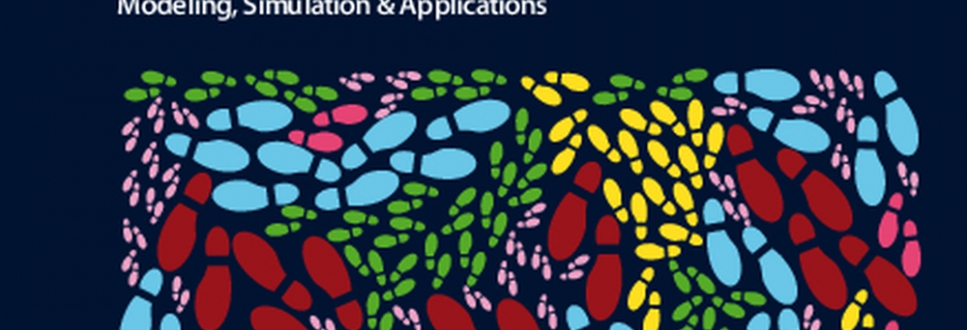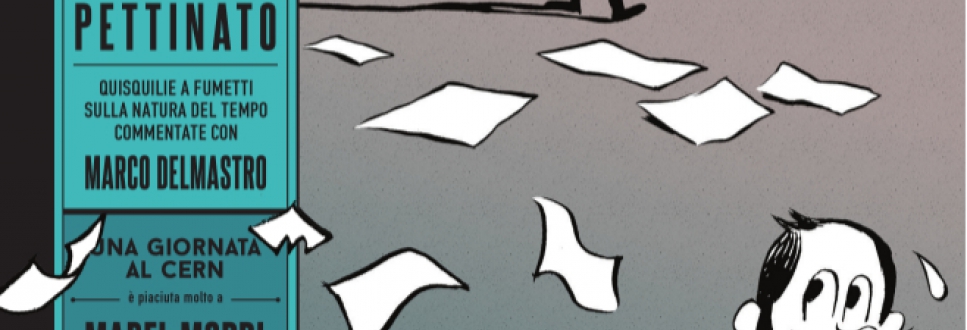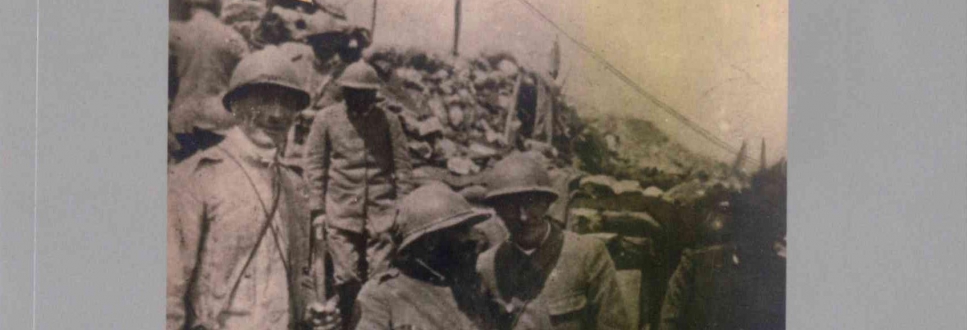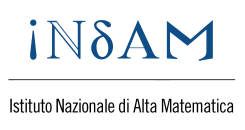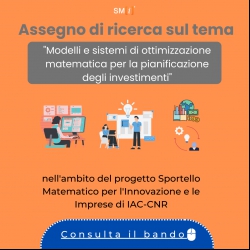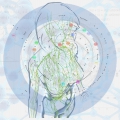
Bioinformatics and Computational Biology
We use mathematical techniques such as statistical and computational support to the understanding of complex biological phenomena. The studies may be an end to the knowledge itself or be linked to one or more diseases of the human organism in which case the modeling often aims to identify a new diagnostic method or to optimize the protocol of an existing therapeutic regimen.
Bioinformatics and computational biology (also known as systems biology) is a relatively new discipline that is booming in response to the need to analyze the huge amount of data generated by modern sequencing methods and medical diagnostics. The search field has purely theoretical connotation (development of new algorithms and / or methods of analysis) and also applied connotation (development of predictive models). This project is configured at the intersection of these two scenarios aiming to achieve results that are expendable in the field of basic biology (protein folding, gene regulation, analysis and integration of multi-omics data, adaptive immune memory, etc.) and in that of medical diagnostics and therapeutics (image processing and biomedical signals, optimization of immunotherapies, diabetes medications, epidrugs, etc.) using knowledge ranging from continuous and discrete mathematics, algebra and statistics, through the 'processing of signals / images and high performance computing.
The research themes and design are manifold. They range from mathematical and statistical models and / or algorithms and analysis software for clinical data, genomic, transcriptomic and epigenomics on the onset and progression of diseases to the development of computational pipeline for analysis and integration of Next Generation Sequencing data on mechanisms cell regulation and their alterations. Moreover, we are develope accurate and efficient algorithms for processing of biomedical signals (EEG, ECG, fMRI, MRSI) for the pathogenesis of schizophrenia and Alzheimer's, mathematical and statistical models and / or algorithms and software for analysis of XRD and NMR data and molecular dynamics, as well as formal methods to deal with the description and the study of the dynamics of complex biological systems at multiple levels of detail (i.e., intra / extra-cellular, systemic) (e.g., models continue to differential equations and / or discrete to agents) or numerical algorithms for biological oscillators modeling the endocrine system under normal conditions and in autoimmune diseases.
PUBBLICATIONS:
A. Cappuccio, P. Tieri, and F. Castiglione. Multiscale modelling in immunology: a review. Briefing in Bioinformatics (2015)
F. Castiglione, F. Pappalardo, C. Bianca and S. Motta. Modeling biology spanning different scales: An open challenge. BioMed Research International, 2014, 902545, (2014) doi:10.1155/2014/902545
P. Tieri, V. Prana, T. Colombo, D. Santoni and F. Castiglione. Multi-scale Simulation of T Helper Lymphocyte Differentiation. Advances in Bioinformatics and Computational Biology, Lecture Notes in Computer Science Volume 8826, 2014, pp 123-134. 2014; 8826:123-134 doi: 10.1007/978-3-319-12418-6_16
Grignolio A, Mishto M, Faria AM, Garagnani P, Franceschi C, Tieri P. Towards a liquid self: how time, geography, and life experiences reshape the biological identity. Front Immunol. 2014 Apr 9;5:153. doi: 10.3389/fimmu.2014.00153. eCollection 2014.
P. Tieri, A. de Graaf, S. Krishnan, M. Ernst and F. Castiglione. Pre-empting Type 2 Diabetes. International Innovation, 140:40-43 (2014)
F. Pappalardo, F. Castiglione Castiglione, C. Bianca, G. Russo, M. Pennisi, S. Motta. Multiscale modelling of living systems: a mathematical and computational perspective SIMAI2014, Taormina, Italy, July 7-10, 2014
Paolo Tieri, Vinca Prana, Teresa Colombo, Daniele Santoni and Filippo Castiglione. Multi-scale Simulation of T Helper Lymphocyte Differentiation. 9th Brazilian Symposium on Bioinformatics, BSB 2014, Belo Horizonte, Brazil, October 28-30, 2014, Proceedings 2014
F. Castiglione, P. Tieri, A. De Graaf, C. Franceschi, P. Liò, B. Van Ommen, C. Mazzà, A. Tuchel, M. Bernaschi, C. Samson, T. Colombo, G. Castellani, M. Capri, P. Garagnani, S. Salvioli, V. Anh Nguyen, I. Bobeldijk-Pastorova, S. Krishnan, A. Cappozzo, M. Sacchetti, M. Morettini, M. Ernst. The Onset of Type 2 Diabetes: Proposal for a Multi-Scale Model. JMIR research protocols, 01/2013 2(2):e44 (2013) (doi: 10.2196/resprot.2854)(open access)
F. Castiglione, P. Tieri, M. Bernaschi, C. Franceschi, G. Castellani, P. Garagnani, C. Sala, P. Liò, V. Nguyen, C. Mazzà, A. Cappozzo, M. Sacchetti, M. Morettini, A. De Graaf, B. van Ommen, S. Krishnan, A. Tuchel, M.Ernst. A multiscale immune system simulator for the onset of type 2 diabetes. ScienceMED. 2014 (in press).
F. Castiglione, V. Diaz, A. Gaggioli, P. Liò, C. Mazzà, E. Merelli, C.G.M. Meskers, F. Pappalardo and R. von Ammon. Physio-environmental sensing and live modeling. Interact J Med Res. 2(1): e3 (2013) doi:10.2196/ijmr.2092 (open access)
Garagnani P, Giuliani C, Pirazzini C, Olivieri F, Bacalini MG, Ostan R, Mari D, Passarino G, Monti D, Bonfigli AR, Boemi M, Ceriello A, Genovese S, Sevini F, Luiselli D, Tieri P, Capri M, Salvioli S, Vijg J, Suh Y, Delledonne M, Testa R, Franceschi C. Centenarians as super-controls to assess the biological relevance of genetic risk factors for common age-related diseases: a proof of principle on type 2 diabetes. Aging (Albany NY). 2013 May;5(5):373-85.
C. Bianco, R. Esposito, C. Angelini, R. Defez Overproduction of indole-3-acetic acid in free-living rhizobia induces transcriptional changes resembling those occurring in nodule bacteroids. In press Molecular Plant-Microbe Interactions (2016)
A. Tarallo, C. Angelini, R. Sanges, M. Yagi, C. Agnisola, G. D’ Onofrio. On the genome base composition of teleosts: the effect of environment and lifestyle. BMC Genomics (2016)
F. Russo, D. Righelli, C. Angelini. Advancements in RNASeqGUI towards a Reproducible Analysis of RNA-Seq Experiments. BioMed Research International (2016).
Z. Anvar, M. Cammisa, V. Riso, I. Baglivo, H. Kukreja, A. Sparago, M. Girardot, S. Lad, I. De Feis, F. Cerrato, C. Angelini, R. Feil, P.V. Pedone, G. Grimaldi and A. Riccio, ZFP57 recognizes multiple and closely spaced sequence motif variants to maintain repressive epigenetic marks in mouse embryonic stem cells, Nucleic Acid Research (2015)
M. Scarpato, C. Angelini, E. Cocca, Pallotta M, Morescalchi M.A., Capriglione, T., Short interspersed DNA elements and miRNAs: a novel hidden gene regulation layer in zebrafish , Chomosome Research, (2015)
C. Angelini, R. Heller, R. Volkinshtein and D. Yekutieli Is this the right normalization? A diagnostic tool for ChIP-seq normalization. BMC Bioinformatics (2015).
F. Russo and C. Angelini. RNASeqGUI: A GUI for analyzing RNA-seq data. Bioinformatics, 30 (17): 2514-2516, (2014).
C. Angelini, D. De Canditiis, I. De Feis. Computational approaches for Isoform detection and estimation: Good and bad news. BMC Bioinformatics, 15:135, (2014)
M. Scarpato, R. Esposito, D. Evangelista, M. Aprile, M.R. Ambrosio, C. Angelini, A. Ciccodicola, and V. Costa. AnaLysis of Expression on human chromosome 21, ALE-HSA21: a pilot integrated web resource. Database, The Journal of Biological Databases and Curation. article id. bau009 . (2014).
S. Comes, M. Gagliardi, Nicola Laprano, Annalisa Fico, Amelia Cimmino, Andrea Palamidessi, D. De Cesare, S. De Falco, C. Angelini, G. Scita, E. J. Patriarca, M.R. Matarazzo, and G. Minchiotti. L-Proline Induces a Mesenchymal-like Invasive Program in Embryonic Stem Cells by Remodeling H3K9 and H3K36 Methylation. Stem Cell Reports, vol 1 issue 4, 307-321, (2013).
P. Liò, C. Angelini , I. De Feis and V.A. Nguyen. Statistical Approaches to Use a Model Organism for Regulatory Sequences Annotation of Newly Sequenced Species, PLoS ONE (2012).
Diele, F., Marangi, C., Ragni, S., IMSP schemes for spatially explicit models of cyclic populations and metapopulation dynamics. Mathematics and Computers in Simulation Volume: 100, Pages 41-53. Published: 2014
Diele, F.; Marangi, C.; Ragni, S., Implicit - Symplectic Partitioned (IMSP) Runge-Kutta Schemes for Predator-Prey Dynamics AIP Conference Proceedings Volume: 1479 Pages: 1177-1180 DOI: 10.1063/1.4756360 Published: 2012
Diele, F.; Marangi, C.; Ragni, S., Exponential Runge-Kutta Integrations for Modelling Predator-Prey Interactions. AIP Conference Proceedings Volume: 1479 Pages: 1181-1184 DOI: 10.1063/1.4756361 Published: 2012
Pace, B.; Diele, F.; Marangi, C., Energy Preservation in Separable Hamiltonian Systems by Splitting Schemes. AIP Conference Proceedings Volume: 1479 Pages: 1204-1207 DOI: 10.1063/1.4756367 Published: 2012
T. Laudadio, N. Mastronardi, L. Vanhamme, P. Van Hecke and S. Van Huffel, “Improved Lanczos algorithms for blackbox MRS data quantitation”, Journal of Magnetic Resonance, Vol. 157, pp. 292-297, 2002.
T. Laudadio, Y. Selen, L. Vanhamme, P. Stoica, P. Van Hecke, S. Van Huffel, “Subspace-based MRS data quantitation of multiplets using prior knowledge", Journal of Magnetic Resonance, Vol. 168, 2004, pp. 53-65.
F. Diele, T. Laudadio, N. Mastronardi, “On some Inverse Eigenvalue Problems with Toeplitz-related Structure”, SIAM J. Matrix Analysis and Applications, vol. 26, no. 1, 2004, pp. 285-294.
T. Laudadio, P. Pels, L. De Lathauwer, P. Van Hecke, S. Van Huffel, “Tissue segmentation and classification of MRSI data using Canonical Correlation Analysis”, Magnetic Resonance in Medicine,Vol. 54, 1519-1529, 2005.
M. De Vos, T. Laudadio, A. W. Simonetti, A. Heerschap, S. Van Huffel, “Fast nosologic imaging of the brain”, Journal of Magnetic Resonance, Vol. 184, 2006, pp. 292-301.
M. Ladisa, A. Lamura, T. Laudadio, G. Nico, “Model independent pre-processing of X-ray powder diffraction profiles”, Digital Signal Processing, Vol. 17, 2007, pp.327-334.
M. Ladisa, A. Lamura, T. Laudadio, G. Nico, “Application of the HLSVD technique to the filtering of X-ray diffraction data”, EURASIP Journal on Advances in Signal Processing, vol. 2007, Article ID 39575, 8 pages, 2007. doi:10.1155/2007/39575.
M. Ladisa, A. Lamura, T. Laudadio, “Classification of crystallographic data using canonical correlation analysis”, EURASIP - Journal on Advances in Signal Processing, vol. 2007, Article ID 19260, 8 pages, 2007. doi:10.1155/2007/19260.
T. Laudadio, M.C. Martinez-Bisbal, B. Celda, S. Van Huffel, “Fast nosological imaging using canonical correlation analysis of brain data obtained by two-dimnsional turbo spectroscopic imaging “, NMR in Biomedicine, Volume 21, Issue 4: 311-321, 2008.
A. Guagliardi, C. Giannini, M. Ladisa, A. Lamura, T. Laudadio, A. Cedola, S. Lagomarsino, R. Cancedda, “Canonical correlation and quantitative phase analysis of microdiffraction patterns in bone tissue engineering”, Journal of Applied Crystallography, 40, 865-873, 2007.
T. Laudadio, N. Mastronardi and M. Van Barel, “Computing a Lower Bound of the smallest Eigenvalue of a Symmetric Positive Definite Toeplitz Matrix”, IEEE Transactions on Information Theory, 54(10), pp. 4726-4731, 2008.
Luts J., Laudadio T., Idema A.J., Simonetti A.W., Heerschap A., Vandermeulen D., Suykens J.A.K., Van Huffel S., ``Nosologic imaging of the brain: segmentation and classification using MRI and MRSI'', NMR in Biomedicine, vol. 22, no. 4, pp. 374-390, 2009.
Luts J., Laudadio T., Idema A.J., Simonetti A.W., Heerschap A., Vandermeulen D., Suykens J.A.K., Van Huffel S., ``Nosologic imaging of brain tumors using MRI and MRSI'', in Chapter 16 Brain tumors (part 1), (Hayat M.A., ed.), vol. 3 of “Tumors of the central nervous system”, Springer, 2011, pp. 155-168.
Croitor-Sava A. R., Martinez-Bisbal M.C., Laudadio T., Piquer J., Celda B., Heerschap A., Sima D.M., Van Huffel S., ``Fusing in vivo and ex vivo NMR sources of information for brain tumor classification'', Measurement Science and Technology, vol. 22, no. 11, Nov. 2011, pp. 114012.
PROJECTS: Mathematical modelling and simulation for biological processes (Modelli matematici e simulazioni per processi biologici )
LINK: http://www.mission-t2d.eu


